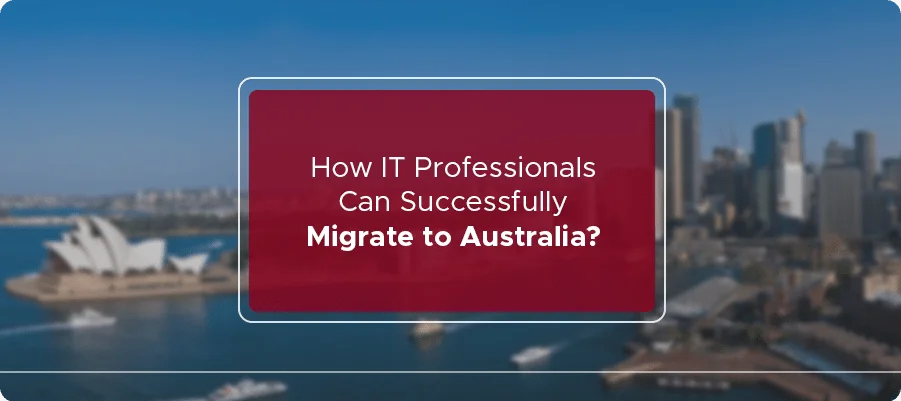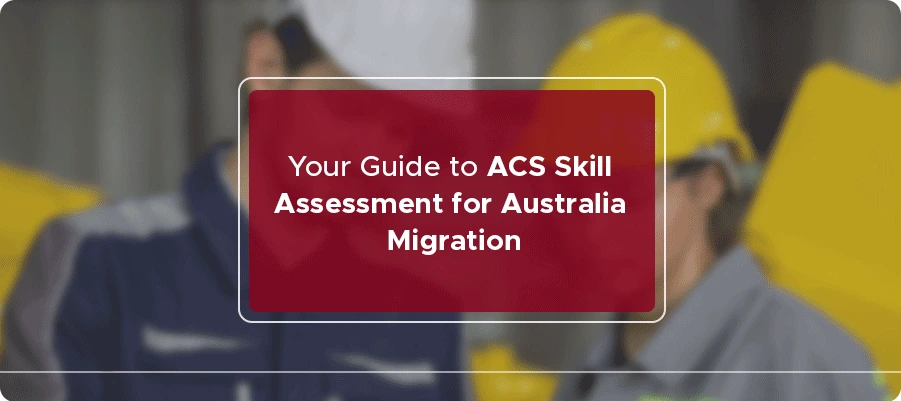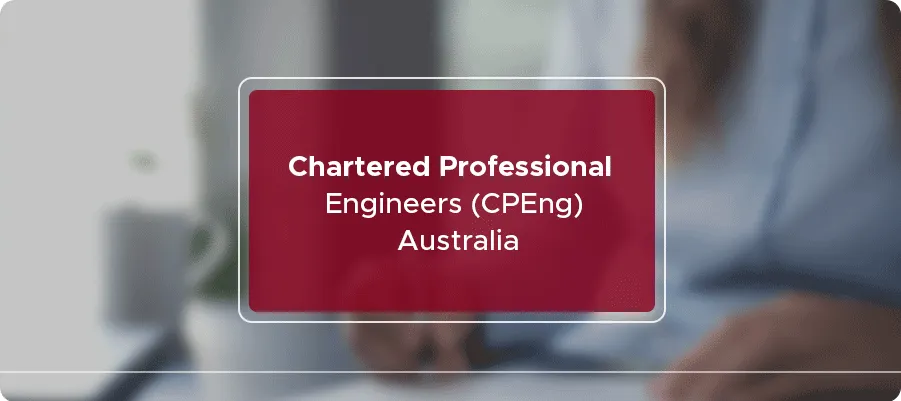
How IT Professionals Can Successfully Migrate to Australia?
With its thriving economy, stunning landscapes, and high quality of life, Australia has become a dream destination for many IT professionals looking to advance their careers. The country offers excellent opportunities in various IT domains, such as software development, cybersecurity, data science, database administration, etc.
Suppose you’re ambitious IT professionals seeking to migrate to Australia. In that case, this comprehensive guide will provide all the essential information and steps to make your migration journey successful.
Australian Migration System
Australia’s migration system is designed to attract skilled professionals worldwide. The country seeks to address skill shortages and enhance its workforce through skilled migration programs.
As an IT professional, you can explore different visa options depending on your qualifications, experience, and occupation. Let’s delve into the types of visas available for IT professionals:
Australian Visa Types for IT Professionals

-
Skilled Independent Visa (subclass 189)
This points-based visa does not require employer or state/territory government sponsorship. To be eligible, you must submit an Expression of Interest (EOI) through SkillSelect and be invited to apply. This visa grants permanent residency, allowing you to live and work anywhere in Australia.
-
Skilled Nominated Visa (subclass 190)
This visa is also a points-based visa requiring state or territory government nomination. You must have an occupation on their skilled occupation list and meet other eligibility criteria. This visa provides permanent residency with an obligation to live and work in the nominating state for a specific period.
-
Skilled Work Regional (Provisional) Visa (subclass 491)
The Subclass 491 visa is a points-based visa for skilled workers willing to live and work in designated regional areas of Australia. It requires either state/territory government nomination or sponsorship by a suitable relative living in a designated area. This visa delivers a pathway to permanent residency through the Subclass 191 visa.
-
Temporary Skill Shortage (TSS) Visa (subclass 482)
The TSS visa allows skilled workers to work in Australia for an approved employer in occupations listed on the Short-Term (STSOL) or Medium and Long-Term Strategic Skills List (MLTSSL). It has short-term and medium-term streams, with different validity periods and pathways to permanent residency.
Learn More: High-paying IT and ICT jobs in Australia: Your Gateway to Success 🧑🏽✈️🏆
Points-Based System for Skilled Migration:
Australia employs a points-based system to assess the eligibility of applicants for skilled migration visas. Each visa type has specific point requirements, and points are awarded based on various criteria. Here are the key factors that contribute to points calculation:
-
Age
Applicants between 18 and 44 years receive higher points than younger candidates.
-
English Language Proficiency
Points are allocated based on English language test scores (e.g., IELTS, PTE, TOEFL, CAE).
-
Skilled Work Experience
Relevant work experience in the nominated occupation is rewarded with points.
-
Educational Qualifications
Higher qualifications, such as a bachelor’s degree or higher, attract more points.
-
Nominations and Sponsorships
State or territory government nominations or employer sponsorships can earn additional points.
-
Other Factors
Additional points for IT professionals can be earned through Australian study, partner skills, and regional study.
Learn More: ACS Processing Time for RPL Report⌛️⏱
Skills Assessment Process
Before applying for a skilled migration visa, checking whether your occupation is on Australia’s Skilled Occupation List (SOL) is crucial. The SOL comprises various occupations in demand in the Australian labor market. The occupation is classified under different codes of ANZSCO that help identify the tasks and duties related to the occupation.
Obtaining a Positive Skills Assessment
A positive skills assessment is a mandatory requirement for most skilled migration visas. The assessment verifies that your qualifications and work experience match the requirements of the nominated occupation.
Each occupation has a designated assessing authority responsible for evaluating the skills assessment applications. Standard assessing authorities for IT professionals include the Australian Computer Society (ACS), Engineers Australia (EA), and the Australian Institute of Management (AIM).
The skills assessment process typically involves the following steps:
a. Preparing and Submitting Documents
To support your skills assessment application, you must gather all relevant documents, including academic transcripts, professional certifications, and employer reference letters.
b. Applying to the Assessing Authority
Submit your skills assessment application to the designated authority. Ensure that you meet all the specific requirements for your occupation and provide accurate and comprehensive information.
c. Assessment Outcome
After reviewing your application, the assessing authority will provide a skills assessment outcome, which can be positive or negative. A positive outcome for IT professionals is essential to proceed with the visa application.
d. Professional Year Program (if applicable)
Sometimes, IT professionals might need to complete a Professional Year Program to gain additional points for their visa application. The Professional Year Program is a structured professional development program collaborating with industry bodies and education providers. It aims to enhance employment skills and cultural awareness in the Australian workplace.
English Language Proficiency
- IELTS (International English Language Testing System)
IELTS is among the most commonly accepted English language tests for Australian visa applications. It assesses the four language skills – listening, reading, writing, and speaking. This test is scored on a nine-band scale, and each visa type has different minimum score requirements.
- Other English Language Tests
Apart from IELTS, other English language tests like the Pearson Test of English (PTE), Cambridge English: Advanced (CAE), and Test of English as a Foreign Language (TOEFL) are also accepted for visa applications. Each test has its format and scoring system, but they are all recognized by the Australian government for proving English language proficiency.
Learn More: What are the KA02 report and its requirement criteria? 🧑🏽✈️🏆
Expression of Interest (EOI) and Points Calculation
Submitting your EOI through SkillSelect
The Expression of Interest (EOI) is a crucial step in the skilled migration process. IT professionals seeking a skilled migration visa must create an EOI through SkillSelect, the online platform the Department of Home Affairs manages. SkillSelect allows you to showcase your skills, qualifications, and work experience and indicate your interest in applying for a specific visa subclass.
Points Calculation
The points-based system plays a significant role in determining your eligibility for skilled migration visas. The number of points you get will determine your rank in the EOI pool. Higher-ranking candidates are more likely to receive an Invitation to Apply (ITA) for a visa. Here are some key factors to consider for points calculation:
- Age: Points are awarded based on age when submitting the EOI. Younger candidates receive more points.
- English Language Proficiency: Higher scores in English language tests yield more points. For example, an IELTS score of 8 or above in each band can earn 20 points, while a score of 7 may yield 10 points.
- Skilled Work Experience: The number of years you have worked in your nominated occupation will determine the points awarded. For example, at least three years of experience might yield 5 points, while eight or more years might yield 15 points.
- Educational Qualifications: Higher education qualifications can earn you additional points. A Ph.D. or equivalent can earn 20 points, while a bachelor’s degree can yield 15 points.
- Nominations and Sponsorships: You can gain extra points if you receive a state or territory government nomination or employer sponsorship.
- Other Factors: Additional points can be earned through studying in Australia, partner skills, and regional study.
It is crucial to ensure that your EOI is accurate and up-to-date. Changes in circumstances or updated information should be promptly reflected in your EOI to maximize your points and improve your chances of receiving an ITA.
State-Specific Nomination Programs
Some skilled migration visas, such as Subclass 190 and 491, require state or territory government nomination. Each state and territory in Australia has its skilled occupation list, and they nominate candidates based on their specific labor market needs.
Eligibility Criteria and Requirements for State Nomination
Eligibility criteria for state nomination vary between states and territories, and they may change over time based on demand for specific occupations. As IT professionals, you must research the specific state or territory requirements you wish to be nominated. Some standard eligibility criteria may include the following:
a. Meeting the occupation requirements of the state/territory
Ensure your occupation is in demand and listed on the relevant state/territory occupation list.
b. Commitment to living and working in the state/territory
State governments may require IT professionals or applicants to demonstrate a genuine commitment to residing and contributing to the state’s economy for a specified period.
c. Work experience in the state/territory
Some states may prioritize candidates with previous work experience or a job offer.
d. Additional Requirements
Depending on the state/territory, you may need to meet other specific requirements, such as financial capacity or language proficiency.
Connecting with state and territory governments through their websites or migration-specific events can help understand their nomination programs and requirements.
Learn More: Help prepare the RPL report for the ACS skills assessment ⏱⌛️
Invitation to Apply (ITA) and Visa Application
Receiving an Invitation to Apply (ITA)
Based on your points ranking in the EOI pool, you may receive an ITA to apply for the skilled migration visa you nominated in your EOI. ITAs are issued during regular invitation rounds, which the Department of Home Affairs typically conducts. The number of ITAs issued and the minimum points required may vary in each round based on the government’s migration planning and labor market needs.
Submitting the Visa Application
Once you receive an ITA, you must submit your visa application within the specified timeframe, usually 60 days. Your visa application must be accurate, complete, and supported by all necessary documents. Some key steps in the visa application process include:
a. Organizing and Collating Required Documents
Gather all the necessary documents, including your passport, skills assessment outcome, English language test results, educational certificates, work experience evidence, and other supporting documents.
b. Health and Character Requirements
All visa applicants must meet health and character requirements. You will have to pass through a health examination by an approved panel doctor and obtain a police clearance certificate from every country you have lived in for over 12 months in the past ten years.
c. Visa Application Fees and Processing Times
Pay the relevant visa application fees, which can vary depending on the visa type and the number of family members included. Visa processing times may vary based on your circumstances, the visa type, and the volume of applications being processed.
Temporary Skill Shortage (TSS) Visa (subclass 482)
Sponsorship by an Australian Employer
The Temporary Skill Shortage (TSS) visa is one of the temporary work visas permitting skilled workers to work in Australia for an approved employer. The TSS visa has three streams:

a. Short-Term Stream (STSOL)
Allows employers to sponsor workers for up to two years, with one onshore renewal, for occupations listed on the Short-Term Skilled Occupation List (STSOL).
b. Medium-Term Stream (MLTSSL)
Enables employers to sponsor workers for up to four years, with eligibility for permanent residency after three years, for occupations listed inside the Medium and Long-Term Strategic Skills List (MLTSSL).
c. Labour Agreement Stream
This applies to employers with a Labour Agreement with the Australian government, allowing them to sponsor workers for specific occupations not covered by other TSS visa streams.
TSS Visa Application
To apply for this TSS visa, the following steps need to be followed:
a. Employer Sponsorship and Nomination
An employer must first apply for sponsorship approval and nominate a position for a skilled worker under one of the TSS visa streams. The employer must demonstrate that an Australian worker can only fill the position if they meet their sponsorship obligations.
b. Visa Application by the Worker
Once the employer’s sponsorship and nomination are approved, the worker can apply for the TSS visa. The worker must meet specific requirements, including relevant skills and qualifications, health, and character checks.
c. Visa Duration and Conditions
The TSS visa allows the worker to work for the sponsoring employer in the nominated occupation for the specified duration. Depending on the stream, the visa may have a pathway to permanent residency after meeting specific criteria.
Tips for a Smooth Migration Journey
- Engaging Immigration Consultants
Navigating the Australian migration system can be complex, and engaging the services of a registered migration agent like CDRReportWriters or an immigration consultant can be beneficial. They can provide expert advice, assist with visa applications, and ensure you meet all the requirements for a successful migration journey.
- Gathering Sufficient Funds
Migrating to Australia requires financial preparation. In addition to visa application fees, you must have enough funds to support yourself and your family during the initial settlement period. The cost of living can vary based on the city or region you choose to live in, so research the expected expenses beforehand.
Guaranteed Positive Skills Assessment!
Get High-Quality CDR at an Affordable Price
Conclusion
Migrating to Australia as an IT professional can be a life-changing decision that opens up personal and professional growth opportunities. However, the process can be complex and challenging, requiring careful planning, preparation, and determination.
This comprehensive guide aims to equip IT professionals with the necessary knowledge and steps to embark on a successful migration journey to Australia. By following the outlined procedures and diligently fulfilling the requirements, you can make your dream of living and working in Australia a reality.
Remember, patience and perseverance are essential, and seeking advice from qualified professionals can significantly enhance your chances of a successful migration experience.





